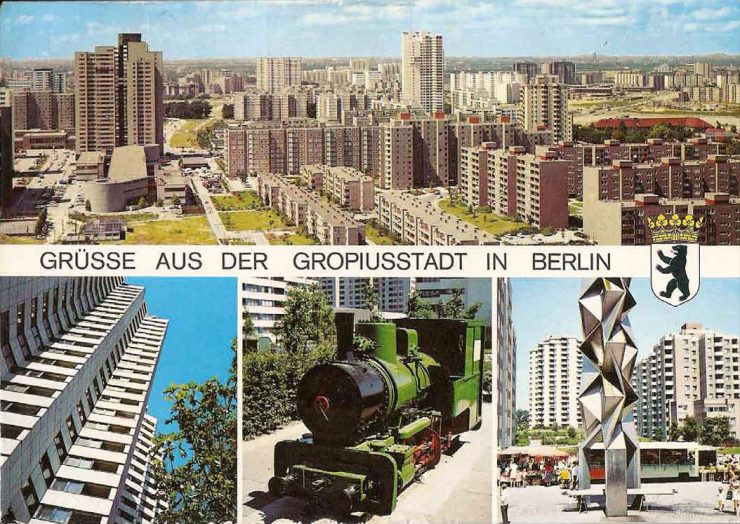Neukölln
Gropious Stadt
 GropiousStadt Aerial View
GropiousStadt Aerial View
Belongs to the district of Neukölln. It was considered as a satellite-city. It is surrounded by colonies belonging to the localities of Buckow, Rudow and Britz, also having contact with the state of Brandenburg. After the 40 anniversary of the building in 2002, was considered Gropiusstadt, with its own name as an independent locality belonging to the district of Neukölln.
It was planned in the mid 50′s, following the example of the Athens Charter, an urban manifesto with the theme of the functional city, to take full advantage of topography, light and air. Because of the wall, West Berlin had few large areas and thus concluded the idea of building upwards. In 264 acres, they produce 19,000 homes that could accommodate more than 50,000 people. On November 7 of 1962, the Mayor Willy Brandt, laid the cornerstone in the presence of Walter Gropius, founder of the Bauhaus and architect of the project. In 1969 Gropius dies, unable to see his work completed. In 1972, while still in construction phase, the satellite town was named in memory of Gropius.
The city was completed in 1975, pretending to be an attractive place, offering a quality of life that the centre of the big city could offer. But in the late 70′s, was developed as a problem due to the large investment in favour of social housing of 90 percent. Due to the large open areas, gloomy corners and the constant turnover of tenants. Residents remained in their apartments, complaining about the loss of downtown and the lack of sense of neighbourhood. The rent rise and the high vacancy rates led to increased social problems, which can be portrayed in the book: “Wir Kinder vom Bahnhof Zoo”, written by Christiane F., Gropiustadt resident. In 1986 they invested in improving facilities and conditions in the construction of various youth centres. After the fall of the wall, the housing demand plummeted, as residents could move freely throughout Germany. Leaving a desolate city. In 2004, the GEHAG began selling the houses to international investors to invest in improving the conditions of the city.
